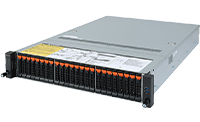SSDs
SSDs (solid state drives) provide high performance storage for desktop PCs, workstations and laptops. In this guide we'll show how to pick the perfect SSD for each of these devices, walking you through all you need to know including form factor and interfaces such as M.2 SATA and NVMe, 2.5" SATA, U.2 and U.3 NVMe. You'll also learn useful background info on how SSDs compare to HDDs, how SSDs work and all about securing your data with RAID.
READ GUIDE